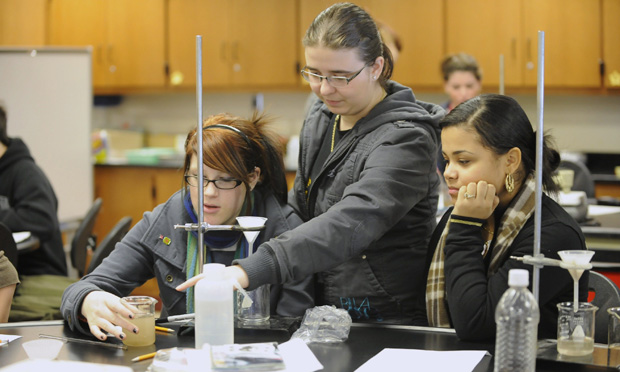When global technology giant Google released statistics on the diversity of its workforce in May 2014, it was pelted with criticism. And media organizations have tracked the company’s slow progress in closing gender gaps and hiring more black and Hispanic employees. However, the reality is that far fewer women and minorities enter careers in the so-called STEM fields of science, technology, engineering and mathematics. A striking illustration of this disparity is the number of girls and minority students who take and pass the Advanced Placement computer science exam in high school. In 2015, about 22 percent of the 49,000 students nationwide who took the AP Computer Science A test were female. Thirteen percent of all test takers were students of color.
Jobs in STEM fields often are high paying and in high demand, which is why government leaders have been pressing colleges and universities to produce more STEM graduates. President Barack Obama has said that science and innovation are key to the country’s economy and that offering more opportunities for Americans to gain related skills can help create jobs. School districts nationwide have launched programs designed to improve the “STEM pipeline,” with the aim of helping pique and support children’s interest in science and technology during elementary, middle and high school. Organizations such as Black Girls CODE offer workshops and after-school programs to teach computer coding to girls from underrepresented communities.
A January 2016 study published in Social Problems considers how teacher demographics could influence that effort. For the study, six researchers from the University of North Carolina at Charlotte and Duke University analyzed a sample of 16,300 students who went to middle school and high school in North Carolina and later attended one of the 16 colleges in the University of North Carolina system in 2004. The authors focus on the race and gender of teachers in hopes of gauging whether girls who attended high schools with more female math and science teachers were more likely to pursue STEM subjects. The study, titled “Demographic Characteristics of High School Math and Science Teachers and Girls’ Success in STEM,” also looks at whether teacher demographics affected the likelihood of black students to study STEM subjects in college. Because of the limited number of Asian, Hispanic and Native American students in the population that the authors studied, the authors were only able to create research models for white and black students.
Among the key findings:
- There is a “positive and significant” association between the proportion of female math and science teachers in a high school and the likelihood that a white female student will choose a STEM-related major.
- Young white women have a greater likelihood of graduating with a college degree in a STEM field if they attend a high school with a higher proportion of female math and science teachers.
- The race of the female math and science teachers does not appear to have a large influence on the likelihood that a white female student will choose a STEM-related major and graduate with a STEM degree.
- Results for black female students are inconclusive.
The authors state that female math and science teachers may help encourage interest among girls by pushing them to take risks and go against stereotypes and by raising their confidence in their abilities. They note the importance of focusing on students’ high school years to help boost the number of women entering STEM-related fields. “Our findings show evidence that suggests that a policy that advocates for even more female secondary math and science teachers in high schools would be effective in increasing the number of white female STEM majors,” the authors state.
Related research: A 2015 study published in Research in Higher Education, “‘But I’m Not Good at Math’: The Changing Salience of Mathematical Self-Concept in Shaping Women’s and Men’s STEM Aspirations,” examines how students’ confidence in their math abilities influences which STEM fields they study in college. A 2013 study published in the American Educational Research Journal, “Why Students Choose STEM Majors: Motivation, High School Learning, and Postsecondary Context of Support,” looks at the important factors that lead students to major in STEM fields.
Keywords: gender, education, STEM, higher education, majors, college, high school, science, engineering, mathematics, technology


Expert Commentary